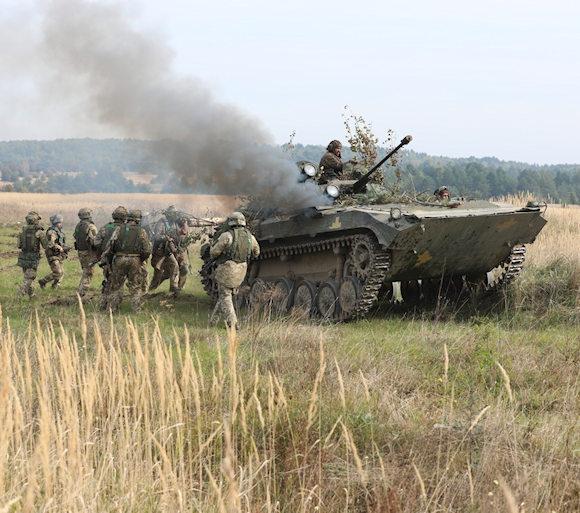Not long ago we had produced an analysis entitled "Swarm of fire" in which we had traced the contours of a hypothetical Russian military operation aimed at bending the Ukrainian state by force starting from the scenario of a dramatic deterioration of the dispute that currently opposes the United States and its Western allies on the one hand and the Russian Federation on the other (see article).
In light of today's events and Russia's decision to wage war on Ukraine, in this short series of three "episodes" we will now return to that topic, however, addressing it from the side of Ukraine by analyzing the country's resilience and whether they can eventually translate into effective geopolitical levers of power in the hands of the Kiev leadership in order to extricate the country from the very delicate situation in which it finds itself.
We will start our narration with a striking quote: "Anything is possible for capable leadership". The meaning of this sentence will become clear at the end of the series.
To begin with, it is necessary to study the "kinetic capabilities" of Ukraine, that is its pure and simple military strength, always bearing in mind that for obvious reasons, the "photograph" that we will provide here necessarily represents the situation in force on the night between 23 and February 24, 2022, before hostilities began.
The Ukrainian Armed Forces were born in their modern form on December 6, 1991, although they did not actually become operational until the end of 1992 with the definitive dissolution of what had been the Armed Forces of the Soviet Union.
Kiev's military facility currently consists of five independent branches: Ground Forces, Air Forces, Navy, Air Assault Forces and Special Operations Forces. In the past, the Ukrainian Armed Forces had two other independent components: the Air Defense Forces and the Civil Defense Troops however they ceased to exist over time, at least in their original form.
 The Air Defense Forces were the direct heirs of the Soviet Air Defense Forces ("PVO strany") and controlled the interceptor fighter units and missile defense units, however in 2004 they ceased to exist as an autonomous weapon and their competences as well as the operational assets were divided between the Ground Forces and the Air Forces.
The Air Defense Forces were the direct heirs of the Soviet Air Defense Forces ("PVO strany") and controlled the interceptor fighter units and missile defense units, however in 2004 they ceased to exist as an autonomous weapon and their competences as well as the operational assets were divided between the Ground Forces and the Air Forces.
The Civil Defense Troops were also heirs of the homonymous weapon existing in the Soviet period and substantially comparable to the Italian Civil Defense, albeit with a greater emphasis on militarization and "paramilitary" roles in the event of conflict. After a period under the control of the Armed Forces, the Civil Defense Troops were first transformed into the Ministry for Emergencies and, from 24 December 2012 they became an agency under the dependence of the Ministry of Internal Affairs called the "Emergency Service of the State".
Here it is necessary to make a small remark since in Soviet times and in the first period of independent Ukraine the Civil Defense Troops they were held in the highest esteem by the population, also because of the delicate tasks under their responsibility that led them to directly affect the daily life of citizens (just like in Italy) especially after the Chernobyl disaster. For this reason the leadership position of this "service" has always been highly coveted and, unfortunately, over time it has ended up in the hands of some of the most incompetent, ruthless and corrupt men (and women) of power in Ukraine who, with over the years, they have literally distorted and stripped the service of most of its skills.
Leonid Kuchma, Viktor Yushchenko, Viktor Yanukovych and Yulia Tymoshenko have all been heads of the Civil Defense Troops / Ministry of Emergencies at some point in their respective careers, and we need to meditate on this fact ... and a lot!
The dominant role in the Ukrainian Armed Forces is occupied, needless to say, by the Ground Forces, in line with both the military traditions inherited from the Soviet Union and with the operational approach adopted in recent years by NATO. At the time of the disintegration of the USSR, the Ukrainian Ground Forces numbered nearly one million men equipped with 13.500 tanks and an even greater number of other "armored" vehicles including armored cars, protected infantry vehicles (APCs), combat vehicles for infantry (IFV) and so on and so forth.

The dramatic economic situation of the country and the changed geopolitical equilibrium soon made it impossible to maintain such an elephantine military instrument and the reductions began immediately also in compliance with Ukraine's obligations to join the Treaty on Conventional Armed Forces in Europe ( CFE Treaty). The interesting thing is that, while the obligations of the treaty required that the surplus arsenals be destroyed or, where possible, converted to civilian use, in Ukraine this clause remained largely a dead letter because the authorities of the country limited themselves to storing them for then being able to sell them at a later time in order to obtain valuable currency on international markets.
In all honesty, however, it must be admitted that, on the one hand, this policy was followed (and in some ways it is still followed today) by almost all the countries of the former Warsaw Pact and the former Soviet Union (not to mention the new unified Germany grappling with the disposal of the arsenals of the defunct GDR!), on the other hand the particularly critical condition in which the economy of Ukraine found itself throughout the 90s can be cited as a partial "mitigating" in favor of the Kiev leadership for having decided to use weapons "to obtain bread".
On the other hand, it does not represent a mitigating factor that, in this as in other cases, the oligarchs and the corrupt elite and not the poor people benefited most from the hefty proceeds from the sale of the country's arsenals. One thing that needs to be specified is that the reduction in personnel and arsenals both for the Ground Forces and for the rest of the Armed Forces did not occur in most cases within the framework of an organic reform, but simply because the government of the country, denying the necessary funding, quietly allowed the military instrument to "wane", while recording frightening peaks in the decline in efficiency year after year.
This dramatic state of affairs became clear to everyone in the course of the dramatic events of 2014 when Ukraine had to suffer the loss of Crimea without a blow and struggled to organize the troops necessary to counterattack the separatist militias in the Donbass area. Since then, the country's leaders have given way to what, at least in official statements, must have been a vigorous modernization process aimed at halting the decline and revitalizing the Armed Forces.
Today the Ground Forces are divided into five operational branches: the Armored Forces, Mechanized Infantry Forces, Rocket Launcher and Field Artillery Forces, L 'Missile and Air Defense Artillery el 'Army aviation.

The Armored Forces and the Mechanized Infantry Forces represent the backbone of the military instrument of Kiev from a quantitative point of view. In the course of the conflict in the Donbass they were thrown into the fray from the beginning suffering heavy losses both of men and of means. At the time of their formation, the Ukrainian Armored Forces lined up 7 armored divisions but today they are reduced to six brigades, of which two are front-line and the remaining four are framed in the reserve.
More consistent are the Mechanized Infantry Forces, heirs of the old divisions of motorized riflemen of the Soviet period. Currently, the brigades assigned to the Motorized Infantry Forces are twenty-three, of which:
- fifteen mechanized brigades;
- five motorized brigades;
- two mountain brigades;
- a brigade of infantry motorized hunters.
The main "workhorse" of the Armored Forces and Mechanized Infantry Forces is the T-64 tank, developed and produced during the Soviet period in factories located in the country. Other types of tanks deployed from Kiev are the T-72 and T-80, also inherited from the Soviet period, and the T-84 (photo), the latter developed by independent Ukraine.
The tank line is then reinforced by thousands of other armored vehicles of all types, mostly inherited from the Soviet period, such as the BMP-1, BMP-2 and BMP-3 infantry fighting vehicles (IFVs) protected vehicles. for the infantry (APC) BTR-60, BTR-70, BTR-80 and MT-LB and the armored cars BRDM-1 and BRDM-2, others obtained in very recent years by Western partners such as armored vehicles Saxon of British production and the famous armored jeeps of American origin M1114 Humvee and others developed and produced by the domestic industry in the last 8 years, such as the protected infantry vehicles (APC) BTR-3, BTR-4, Kozak-2, KraZ Shrek, KraZ Spartan, Dozor-B e Innovator. It is very difficult to say precisely how many means are available to the forces of Kiev. In fact, for reasons of national security, from 2014 onwards, the Government and the Ministry of Defense have stopped publishing the related tables which up to the previous year showed the statistics on the availability of equipment and on the numbers of vehicles kept in the warehouses.
Most of the quantitative data in circulation are taken from publications by Jane's, RAND or the CIA which, however, have proved to be not always reliable.
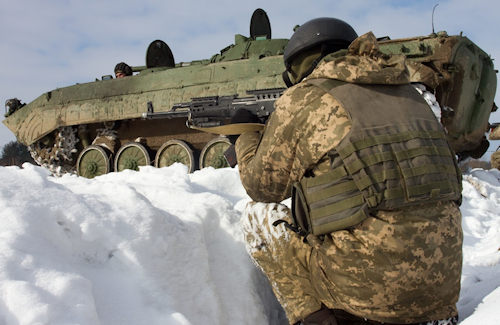 The main unknowns regarding the statistics of Ukrainian military means essentially concern four aspects:
The main unknowns regarding the statistics of Ukrainian military means essentially concern four aspects:
- first: how much of the arsenals inherited from the Soviet period is still available to Ukrainians in stock and has not been sold, destroyed or converted in the meantime?
- second: what is the real ability of the Ukrainian defense industries to put previously stored assets back into service and, perhaps, upgrade them to modern battlefield standards to increase their operational capabilities?
- third: what is the real capacity of the Ukrainian technical offices and industries to design, test and produce in large numbers new combat vehicles for their armed forces?
- fourth: overall, from 2014 to date, how many Ukrainian Armed Forces vehicles were destroyed or captured during the Donbass War?
Considering the sources relating to the Anglo-Saxon world mentioned above, the number of armored vehicles of all types nominally available to Ukrainians today should be around 16.000 units, but it is obvious to anyone that those actually operational are only a fraction of the total (maybe 30% to want to be generous!). It is obvious that if the Armored Forces and the Mechanized Infantry Forces want to be able to devise an effective defense strategy, they must necessarily be able to count on the collaboration of the Rocket Launcher and Field Artillery Forces and the Army Aviation and on the protection guaranteed by the Artillery. Missile and Air Defense.
The Rocket Launching and Field Artillery Forces are made up of fire units equipped with tactical missiles, howitzers, cannons, mortars, rocket launchers and anti-tank guns and as in the purest traditions borrowed from the Soviet past, they represent the true "queens of the battlefield ".
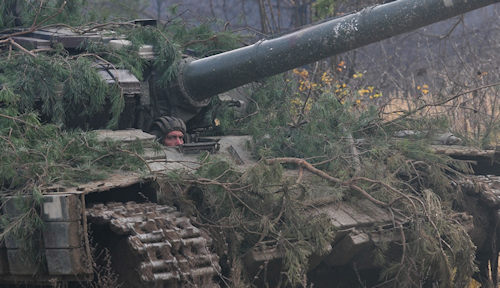 From the organizational point of view they are divided into "tactical units", "front units" and "strategic units" and are equipped almost exclusively with means inherited from the Soviet period.
From the organizational point of view they are divided into "tactical units", "front units" and "strategic units" and are equipped almost exclusively with means inherited from the Soviet period.
The "tactical units" are made up of nineteen "artillery groups" assigned to each of the brigades that make up the Armored Forces and the Mechanized Infantry Forces and have the task of providing tactical support fire to the same units.
The "front units" instead are grouped into eleven brigades placed under the local command and assigned to specific support missions if the tactical-strategic situation requires it. These brigades are divided into: a training brigade, two reserve brigades, four brigades assigned to each of the four territorial commands into which the territory of Ukraine is divided (North, South, West, East), three rocket artillery brigades and a heavy artillery brigade. Finally the 19a “Santa Barbara” missile brigade represents the only “strategic unit” present in the organization chart of the Ukrainian Armed Forces.
As for equipment, for squad-level support, the Rocket Launcher and Field Artillery Forces use a plethora of light 82mm and 120mm heavy mortars inherited from the Soviet period such as the 2B14 Podnos, 82-BM- 37, the 2S12 Sani and the 120-PM-43 and the same calibers produced in recent years by Ukraine such as the KBA-48M and the M120-15 Molot. In the anti-tank sector, the 85mm D-44 and D-48 guns, the 100mm T12 Rapira guns and the powerful 125mm 2A45 Sprut-A guns are available. All Ukrainian anti-tank guns were inherited from the Soviet period except the 2A45 Sprut-A which, being produced in the KMDB plants in Kharkov, in eastern Ukraine, continued to be produced even in the period of independence.
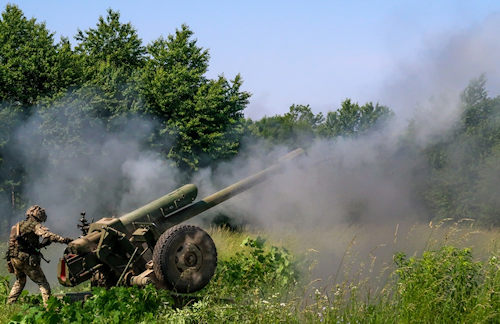 A large number of howitzers are available for theatrical and area bombing such as the 30 mm D-122 (photo), the D-20, the 2A36 and the 2A65 all 152 mm and the 4 mm B203, self-propelled machines such as the 2S1 Gvozdika 122 mm, the 2S3 Acacia, the 2S19 Msta-S and the ShKH Vz. 77 DANA 152 mm and the very powerful 2S5 Giatsint-S and 2S7 pawn 152 and 203 mm respectively.
A large number of howitzers are available for theatrical and area bombing such as the 30 mm D-122 (photo), the D-20, the 2A36 and the 2A65 all 152 mm and the 4 mm B203, self-propelled machines such as the 2S1 Gvozdika 122 mm, the 2S3 Acacia, the 2S19 Msta-S and the ShKH Vz. 77 DANA 152 mm and the very powerful 2S5 Giatsint-S and 2S7 pawn 152 and 203 mm respectively.
The long-range bombardment is then supported by a large contingent of multi-barrel rocket launchers consisting of the BM-21 rocket launchers City with 40 barrels of 122 mm each, BM-27 Uragan with 16 barrels of 220 mm each and BM-30 Smerch with 12 rods of 300 mm each. With the only exception of the ShKH Vz. 77 DANA which are of Czechoslovakian origin, all the other systems mentioned above are of Soviet origin, perhaps updated in recent years by Ukraine or neighboring Belarus.
The aforementioned 19a “Santa Barbara” missile brigade is also equipped with about 90 OTR-21 tactical ballistic missiles Tochka-U, also of Soviet origin, capable of striking with great precision targets located 120 kilometers away and which represent the only strategic weapons in the possession of Ukraine. In fact, it seems that 50 9K52 tactical ballistic rockets are still available in the warehouses Moon-M but they have not been operational for a very long time and would need a complete overhaul in order to be used again.
Excluding mortars, but considering all anti-tank guns, artillery pieces, howitzers, self-propelled guns, multi-barrel rocket launchers and tactical ballistic missiles, the Rocket Launcher and Field Artillery Forces of the Ukrainian army have at least 4.200 "guns". Also in this case, as in armored vehicles, it is difficult to correctly evaluate the levels of operation, however they are presumably much higher given that the level of maintenance required by artillery systems is lower than in armored vehicles. Furthermore, training the servants of the artillery systems is much simpler than with soldiers serving in other branches with much more complex armaments.
All these elements lead us to say that, on the whole, the Rocket Launcher and Field Artillery Forces represent an asset perhaps even more important for the military instrument of Kiev than the Armored Forces and the Mechanized Infantry Forces. However, this does not mean that they do not have limitations!
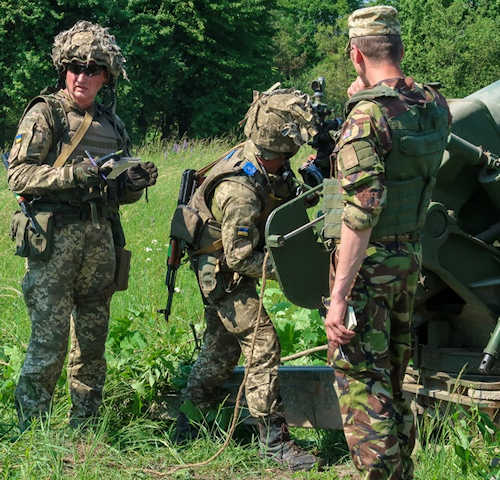 First of all, in a situation of total war against Russia, the Ukrainian artillery would be numerically inferior to that of the adversaries and not able to offer the same volumes of fire in every sector of the front, being the same very large.
First of all, in a situation of total war against Russia, the Ukrainian artillery would be numerically inferior to that of the adversaries and not able to offer the same volumes of fire in every sector of the front, being the same very large.
Secondly, the Kiev artillery is still mostly made up of towed pieces, which must then be moved from position to position using trucks or other rotated or tracked vehicles. This fact reduces both the mobility and the ability to survive in the face of the so-called "counter-battery fire" which, knowing the Russian military doctrines, will arrive punctually like hail from the sky.
Lastly, the small number of OTR-21 tactical ballistic missiles Tochka-U available puts the Ukrainians at a decisive disadvantage compared to the Russians and lacking a real strategic response capacity, unless some hothead in Kiev proposes to use the ninety ballistic missiles available to organize a concentric bombing targeting nuclear power plants located in Smolensk, Kursk, Voronezh and Rostov, however the kind of response that the Russian Federation would be able to field after such an action would be such that, frankly, it is unlikely that a strategy like this could even be taken into account. consideration.
Aware of this lack of options, the military leaders in Kiev have long tried to resolve the situation by putting into service new systems of national production such as the rotated 155 mm 2S22 self-propelled machine. God damn it, the 300 mm multi-barrel rocket launcher system Vilkha, the cruise missile Korshun-2 and tactical ballistic missiles Hrim-2 e Sapsan. In any case, none of these systems has yet entered service and, probably, never will.
The fourth branch of the Ukrainian Ground Forces is constituted by the Missile Artillery for Antiaircraft Defense and we had already talked about it in the course of the analysis entitled "Swarm of Fire".
We recall here that for the defense of their armored columns, the Ukrainian Land Forces have about 1.500 pieces of anti-aircraft artillery towed between S-60 cannons and twin ZU-23-2 machine guns, 400 self-propelled anti-aircraft ZSU-23-4 "Shilka ”And 2K22“ Tunguska ”, 350 9K31 mobile short-range anti-aircraft missile systems Lightning-1, 9K35 Lightning-10 and 9K33 Osa, and one hundred 9K37 medium- and long-range missile systems Beech, 9K330 Tor and S-300V1.
As mentioned above, this represents a large and powerful but dated and vulnerable deployment to the massive use of electronic warfare systems that the Russians will surely deploy in the theater of operations.
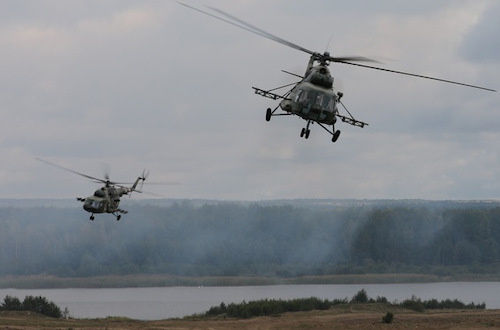 The last component of the Ukrainian Ground Forces is constituted by the Army Aviation, which aligns a composite "flying armada" consisting of no less than 250 rotary-wing aircraft including Mi-2, Mi-8 and Mi-26 from transport and attack Mi-24. It is organized around an operational command, a depot base and four separate brigades assigned to each of the country's four military regions and, on paper, appears to be a powerful force. In reality, it too has been severely penalized by both the scarcity of funds and the lack of spare parts.
The last component of the Ukrainian Ground Forces is constituted by the Army Aviation, which aligns a composite "flying armada" consisting of no less than 250 rotary-wing aircraft including Mi-2, Mi-8 and Mi-26 from transport and attack Mi-24. It is organized around an operational command, a depot base and four separate brigades assigned to each of the country's four military regions and, on paper, appears to be a powerful force. In reality, it too has been severely penalized by both the scarcity of funds and the lack of spare parts.
Ukrainian helicopters suffered serious losses during the first phase of the Donbass War, in 2014-2015, and despite the fact that Motor Sich (a company that is part of the Ukrainian military-industrial system) has reached full capacity to produce both propellers and rotor blades, most of the aircraft are still inoperative. In any case, even if it were at the peak of its power, it is very difficult for the Army Aviation to influence the course of the ground war because the Ukrainian helicopters would find themselves operating in an environment literally "saturated" with Russian anti-aircraft missiles. risking complete annihilation.
Ukraine to the test of fire: resistance or surrender? (second part)
Ukraine to the test of fire: resistance or surrender? (Part Three)
Photo: US Army / US Navy

